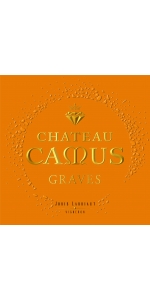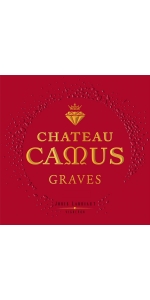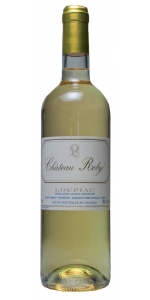Wine from Larriaut

The estate has been operated by the Larriaut family since 1890, and Château Camus itself since 1923. Today, it is run by Joris Larriaut who represents the 4th generation.
The family used to practice polyculture, a mixed farming of vines, pear trees, and tobacco plants, but in the 1960s, Jean-Pierre Larriaut decided to convert his gravelly and silico-gravel soils into a single landscape: vineyards. For the reds, he planted Merlot and Cabernet Sauvignon, and for the whites, Sauvignon and Semillon. Today, the estate spreads over 11 hectares (27 acres).
The gravel and pebble-based soils give birth to a racy red wine with great aromatic power (blackcurrant, cherry, cinnamon) and great aging potential and a dry white wine with lively and crisp aromas of citrus fruit and white flowers.
Camus Graves Blanc is made from 50% Sauvignon Blanc and 50% Semillon.
A beautiful, brilliant color, this wine offers a great aromatic balance with complex and mineral notes, Offering white fruit (peach and pear), citrus (grapefruit and lemon), and a toasty finish with a delicate oak presence. The mouthfeel is rich and complex with a great minerality, freshness, structure, and a good length to the finish.
Pairs with poultry, fish, and shellfish.
Camus Graves Blanc is made from 50% Sauvignon Blanc and 50% Semillon.
A beautiful, brilliant color, this wine offers a great aromatic balance with complex and mineral notes, Offering white fruit (peach and pear), citrus (grapefruit and lemon), and a toasty finish with a delicate oak presence. The mouthfeel is rich and complex with a great minerality, freshness, structure, and a good length to the finish.
Pairs with poultry, fish, and shellfish.
Chateau Camus Graves Rouge is made from 50% Merlot and 50% Cabernet Sauvignon
A dark purple color, this wine exhibits some delicate oak aromas, well-integrated with notes of red fruits and spices. The mouthfeel is fresh and fruity, with soft and elegant tannins. The wine is ready to drink but can also be aged for a few years to develop some secondary aromas with truffles and mushroom components
Pairs with red meat, poultry, and cheese.
Roby Loupiac Semillon is made from 100% Sémillon.
This two-hectare estate is run by Colette Larriaut who inherited from her parents Jean and Denise Boutet. Colette focuses on traditional winegrowing and winemaking methods and keeps the passion and precision required to produce great sweet wines.
Château Roby Loupiac is built over time. More time is allowed to ferment and mature in order to produce a wine of character, a sweet wine marrying candied fruits, white fruits and white flowers with a remarkable freshness. The finish is long and very pleasant.
Loupiac is a very good alternative to Sauternes. It is less sweet and syrupy and has a nice balance and a delicious mouthfeel.
RS is around 60gr/L
Excellent with Foie Gras and Blue Cheese, but also with dessert and particularly with dark chocolate based cake.
- back
Selected Options
Wineries
Categories
Pricing
Countries
Regions
Grape Types
Wineries
Organic/Free Shipping
Vintage Unknown
All older vintage wines have been purchased from a single collectors cellar. Pictures can be requested before shipment.
Antica Vigna Valpolicella Ripasso DOC Superiore is made from 50% Corvina, 45% Rondinella and 5% Merlot.
Ripasso Superiore DOC is an elegant and refined wine, showing a beautiful and intense ruby color. Spicy, with cherry hints and wild berries notes, it features great personality and complexity. In the palate it is rich, very fruity, elegant and still young but already very well-orchestrated, with the typical notes of wild berries that blend well with the complexity of the wine.
20% in steel· 80% in wood for 6 months of which 2/3 in American and French barriques, half of which are used for the second and third time 1/3 in large barrels
Aging:
Fermentation time: about 7/10 days the first and 15 days the second.
Fermentation: at a controlled temperature of 18/20° and second fermentation on the skins of Amarone at 18/20°C.
Vinification: soft crushing of destemmed grapes to obtain Valpolicella.
Drying: the grapes are not dried but vinified fresh.
Harvest: mid-September with manual harvesting of the grapes.
VINIFICATION AND AGENG:
Vineyard management: sustainable agriculture and great attention to natural cycles
Vine density: 4,000 to 5,400 vines per hectare
Vine planting year: from 1972 to 2009
Vineyard training system: guyot and pergola
Soil type: limestone
Exposure: south
Height: 350/400 meters asl
Geographical location: Tenuta di Mezzane, Tenuta di Cazzano di Tramigna
THE TERRITORY:
Pairs well with grilled and roasted meats, as well as cheese.







